Wetzlar, January 13th 2022. The new Leica M11 combines the experience of traditional rangefinder photography with contemporary camera technology, delivering maximum flexibility to every photographer. Featuring an exclusive triple resolution sensor, expanded ISO range, dual memory options, extended battery life and a streamlined and intuitive menu system; the Leica M11 represents a new benchmark in digital photography as the most flexible M-System camera in Leica’s history.
At the heart of the M11 is a full-frame BSI CMOS sensor with Triple Resolution Technology. Raw image files in DNG and JPEG format can be recorded at 60, 36 or 18 megapixels, always using the full sensor area. The 60-megapixel option delivers unprecedented image quality and detail resolution, utilizing the full optical potential of Leica’s latest APO Lenses for the M-System – whereas the lower resolutions enable faster camera performance, extended burst lengths, and smaller files.
Preorder the Leica M11
A special IR + UV cut filter comprised of two extremely thin, cemented layers of glass, achieves an especially effective correction of even the most oblique rays of incident light. With a new color filter array, the camera also offers an improved, more natural color reproduction.
While maintaining the iconic look of a traditional Leica M, the carefully optimized design of the Leica M11 is focused on efficiency and ergonomics. The controls have been arranged in a unique layout next to the 2.3 million pixels high-resolution touchscreen. The menu structure of the M11 remains consistent with the Leica SL2 and Q2, unifying the acclaimed interface for a more user-friendly experience.
The Leica M11 has a sensitivity range of ISO 64 to 50,000; it records at 14-bit color depth and has a dynamic range of up to 15 stops. With its Maestro III processor, the Leica M11 offers a fluid and responsive operation, even at the highest resolution and image quality settings. With the optional electronic shutter featuring a shutter speed of up to 1/16,000 of a second, photographers are empowered to work with wide open apertures, in bright light, without ND filters. The M11 marks the first-time multi-field metering in rangefinder mode will be available, offering photographers a valuable tool to curate light.
The black-finish variant of the Leica M11 features a top plate made of high-quality aluminum with a scratch-resistant coating. As a result, the body is approximately 20% (100 grams) lighter than its silver-chrome counterpart. By comparison, the silver- chrome M11 features a classic brass top plate and weighs 640 grams.
The deliberate omission of the traditional base plate is unique to the M11, offering photographers direct access to the battery and SD card. In addition to the SD card slot, the Leica M11 is equipped with a generous internal storage capacity of 64 gigabytes. This makes the M11 the first M model to save image files simultaneously onto two different storage media. The 1800mAh battery stores 64% more power than before, and combined with the camera’s more efficient operation, allows for considerably longer shooting sessions with a single charge. Additionally, the newly added universal USB-C port also serves to charge the camera’s battery, using most USB-C chargers.
Upgraded connectivity features for the Leica M11 will be available through a new firmware version in the second half of 2022. This will enable the new M11’s advanced connectivity capabilities which will elevate users' mobile workflows and enhance the Leica FOTOS app with the possibility to embed location data, access images via Bluetooth connection, and allow increased transfer rates. The M11 is compatible with Apple products and accessories and offers unique abilities with the included Leica FOTOS cable.
With the evolution of the Leica M comes new accessories to enhance the rangefinder experience. The new Visoflex 2 electronic viewfinder features a 3.7-megapixel resolution display to provide outstanding image control in Live View mode. Encased in a metal exterior, the Visoflex 2 perfectly matches the M11 in terms of design and functionality. Full-frame viewing and the precise focusing of Leica lenses is supported by the Visoflex 2’s large diopter adjustment range of -4 to +3- and 90-degree tilt function. To improve ergonomics without obstructing access to the battery and SD card, photographers will have the option to complement their M11 with a newly designed handgrip. The new handgrip doubles as a tripod mount, where the Leica M11 can be attached to Arca-Swiss-standard tripod heads without the need for any additional equipment.
Leica M11: Witness the Future
“We are very proud of the new M11,” says Stefan Daniel, Executive Vice President Technology and Operations. “This camera is another milestone for Leica. Its inner workings are a completely new development, while the exterior remains true to the iconic Leica M design.”
“As we all know,” says Dr. Andreas Kaufmann, Chairman of the Supervisory Board of Leica Camera AG, Wetzlar, “the iconic Leica M-System has accompanied dedicated photographers worldwide over decades, giving them a superior tool for witnessing their time and creating outstanding pictures. The new M11 will continue this legacy with outstanding technology, based on our experience developing cameras since 1925.
Preorder the Leica M11

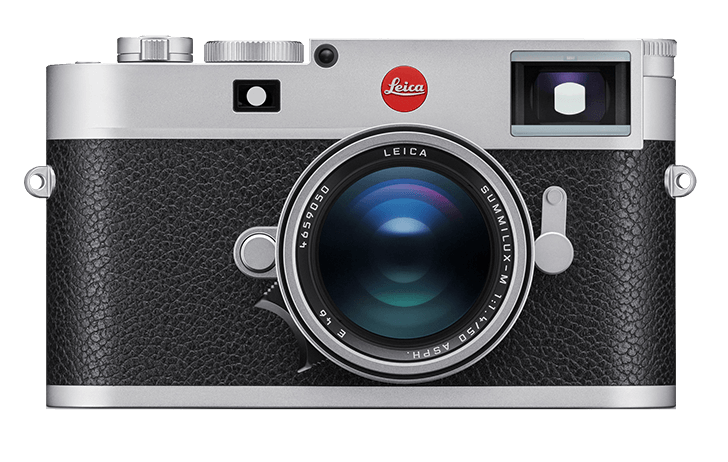
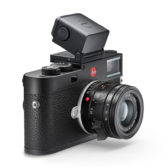
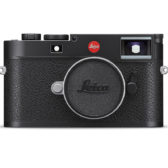
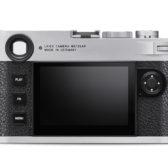
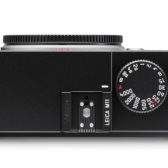
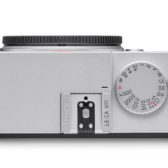
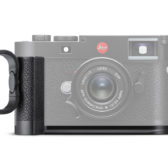
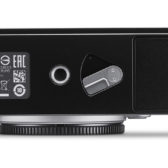
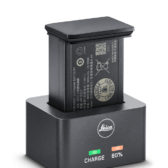
(I know this is nothing new but I'm feeling mischievous).
While there are some interesting things on the M11 vs the M10...there are some puzzling things.
The first that caught my eye...was that the black model, the one that is generally more desired, is not made of brass, but instead is aluminum.
They are actually saying "Yay...it is lighter".
I don't get that, one of the things that is desirable about the M cameras is that they have a definite "heft" to them, they feel like quality in a small package. And for previous models, the ones with black paint, having that brass underneath is desirable as the camera ages and the paint on the edges of things begins to wear off and you see the golden brass show through...."brassing" as they call it.
I like the solid feel of my M10M in my hand...I dunno if I'd be as happy if felt lighter and cheaper in Al.
The change of the bottom is interesting and if you don't ever have a QR plate or L bracket on your camera, it will be quite a bit faster to change batteries.
I use a RRS L-Bracket on mine, it actually replaces the old bottom plate....I don't see any L-Brackets for the M11 avoiding having you have to remove it each time you want to change a battery or SD card.
The larger sensor seems to be interesting, but....with this camera not having IBIS...I'm wondering if it will be difficult to shoot at slower speeds with such a large sensor?
Well, I have my M10M...I bought it for the special qualities you get with a true monochrome camera, so I'm likely done with buying Leica cameras. I supposed if I came up with a smoking deal on say Leica Q2, I might spring for one of those to have as a small, easy to carry color camera to go along with my B&W camera....
I have that, my GFX100, and my old standby 5D3 Canon. I"m saving on the sidelines...trying to decide between a R5...or seeing what the R1 will look like....
Its a fun time to have camera GAS that's for sure.....so many new toys...er......tools to choose from!!
:)
To my sensibility, the unshaven old host reading note cards is about all you need to see: this is your grandfather's camera. A camera reborn of its own corpse like Colin Robinson, something to laugh at before changing the channel. If you want a landscape 35mm camera exclusively, and money is no matter but status totems are, perhaps this is for you as I have no doubt it will capture wonderful images and even more wonderful bragging opportunities. Many of us moved past this long ago.
If Leica gifted me a kit, I'd sell it, buy an R3, and use the difference to cover the taxes.
fwiw, as Canon and competitors cameras formerly never came close to the cost of Leicas, that chasm is rapidly shrinking.
I also have found that generally speaking, those without hands on experience with Leicas, especially the newest M series enjoy a good razzing of the brand and it's stereotypical buyers and those with time spent with one in hand truly appreciate the camera and like Cayenne, can verbalize the shooting experience and imho, make the comedic genius non users come across as sophomoric. My late Father in Law had one and even with his middling amount of technique and experience, his images were stellar. Just imagine what I could have created with a proper bequeathing. Lol.
I recall the mono version that came out a few years ago was well received - because there was no added colour filter over the base mono sensor. I can undertand how that can produce noticeably different results out-of-camera.
With that definition none of the latest Canon cameras got "real" RAW. As example 1DMK3, R5 and R6 all applies noice reduction to the data at lower ISOs before creating the RAW file. R3 does the same but on all ISOs. Some cameras do more than others before creating the RAW file, but it's still as raw as you can get the data out from the camera.